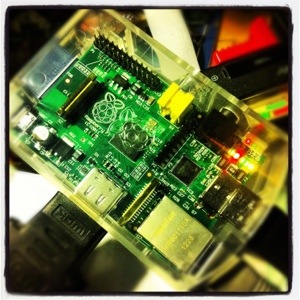
You’ll have heard the news. Talis Systems is being wound down. The considerable investment that Talis have made in fostering the vision of the web of data has resulted in notable successes with notable organisations such as the BBC, the Ordnance Survey and the British Library. I’m proud to have been a part of the word-class consulting team that helped to get these organisations to a point where they could see the benefits of and join the web of data vision. However, the commercial realities of a small organisation working in a market that is growing at too slow a rate meant that we could not sustain the required level of investment.
For the last year and a half I have been talking to organisations about how they use data and how they want to take steps to make that data more openly available. This is worthy stuff, but for most organisations this is also experimental stuff. Some were more wiling to go for the ride than others, but even those organisations baulked at changing everything all at once.
And that’s not surprising.
I’ve written before about how graph thinking and open world assumptions make you approach a project in different ways. Some organisations are not ready to do that. They feel that the change to a more open approach challenges their existing revenue streams. Yet they don’t see that the people who currently pay for data in its existing form will continue to do so for some time because they too are resistant to change. However, there will come a time when those customers will also feel they need to change the way they do things. If you want to protect your current revenue stream you have got to explore some new opportunities so that you are ready when your existing customers move to a new technology.
But still, as employees working in an uncertain climate, not everyone is willing to risk their own standing within an organisation. Especially when you look outside that organisation and you see unemployment, recruitment freezes and belt tightening.
Which brings me to the factor in winding Talis Systems down which couldn’t be foreseen, and that is one of pure timing. A general attitude of wariness has emerged as a result of the current economic climate; the Queen’s jubilee and a longer royal wedding holiday pushed spending decisions into the following months; a typically apathetic month is usually expected in August when everyone is on holiday and a decision freeze for the Olympic games all served to make people put off purchasing decisions, especially where those decisions related to experimental projects. We can’t afford for everyone to wait until September to decide to do something.
This indecision is one of the indicators of a slow moving market that is not ready for commercial exploitation by a small business.
So we were too early. We had a vision for easy data flow into and out of organisations, where everyone can find what they need in the form that they need it through the use of linked data and APIs, and where those data streams could be monetized and data layers could add value to your datasets. But for many, the vision simply seems to be more of a dream. The difference between a dream and a vision is that a dream is more fantastical, while a vision is a practical goal. I think we had the vision, but others saw it as a dream, something unobtainable, something floating around within the cloud computing, big data, semantic web and linked data marketing spiel.
Other organisations besides Talis, sharing similar visions, have all had to change the way they present themselves as they realise that the market is simply not ready for something so new.
I have had the privilege over the last few years to work with many very smart people, both within Talis and within the organisations who engaged us as consultants and providers of a service around their data. I wish we could have gone on for longer, but sensible business decisions are made and have to be stuck to.
I look forward to sharing with you what I’m going to do next.
As a footnote: I should point out that Talis Education Ltd are still going strong with the Talis Aspire reading list management tool which is used by around 25% of UK universities and by similar organisations internationally. This is where Talis Group investment will be focused.





